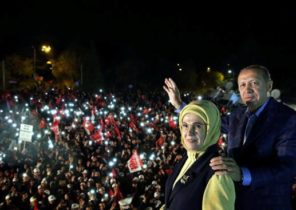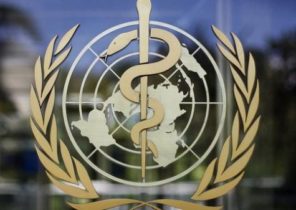Now comes the year 2017. November 7 will mark the 100th anniversary of the great October Socialist revolution in Russia. The Soviet Union collapsed in 1991, but what would the world be if that state was reunited in our day? What would be the Soviet Union in 2017?
First say a few words about modern countries that once were part of the Soviet Union. If the USSR reunited, he fully covered the territory of Russia, Ukraine, Belarus, Moldova, Lithuania, Latvia, Estonia, Georgia, Armenia, Azerbaijan, Kazakhstan, Uzbekistan, Turkmenistan, Kyrgyzstan and Tajikistan.
It is obvious that the modern Soviet Union would become a huge country. After all, Russia by the area of its larger surface area of Pluto.
The Soviet Union would surpass the size of Australia, Antarctica, South America, the Arctic and southern oceans, which would make the USSR bigger than three continents, two oceans and one former planet. On the territory of the USSR were located 11 time zones. This means that if in the European part of the country noon, in the East of the country is already 11 PM.
The population of the reunified Soviet Union would equal 294 837 000 people, which would put him at 4th place in terms of population in the world (after occupying 3rd place United States). It is interesting to note the fact that in 1991 the population of the Soviet Union was much the same — 293 048 000. This shows how weak was the growth of population after the collapse of the Soviet Union. In 1991, the US population totaled 248 710 000 people, that is the time less than that of the USSR. But in recent years the population of America greatly increased to almost 319 million people.
Most of the inhabitants of modern the USSR would have been ethnic Russians — about 46% of the total population. The second place was occupied by the Ukrainians, Uzbeks, and over a hundred other ethnic groups. Also as in the days of the Soviet Union, the dominant language was Russian. 58% of the population would be able freely to talk to him and understand him. Probably the Russian would become the only state language. To create a new true the USSR would have had to go back to communism. The Communist party was the only legal party and would have absolute power. Part of the ideology again would become atheism. The believers could practice their exercises in specially designated areas. And public manifestations of religion would be prohibited.
Despite this, a significant part of the population of the Soviet Union would have been religious and only 12% would be atheists or agnostics. 54% would be Orthodox Christians, 3% are Catholic, 24% are Muslims, mostly Sunni, 3% Shia and 4% are adherents of other religions.
The capital of the state would be the current capital of Russia is Moscow, which would be the largest city of the modern Soviet Union. The five largest cities are also included: Saint Petersburg, which was renamed again to Leningrad, Kiev, Tashkent and Minsk.
The economy of the Soviet Union would have been strong enough and would have amounted to two trillion dollars, putting the Union on the eighth largest economy in the world. Today Russia occupies the 12th place. Thus the Soviet Union would have surpassed countries such as South Korea and Canada, but India and France to catch up with couldn’t.
GDP per capita would be a pretty low — only 6, 899 U.S. dollars, which would put the Soviet Union at the 76th place above Bulgaria, but lower than China. Such an economy would have a significant support of the Soviet army. Military budget amounted to UAH 80.4 billion US dollars, being the fourth in the world after Saudi Arabia, China and the United States.
The lack of funding in the USSR would compensate quantity. The Soviet Army would be the world’s second largest after the Chinese and totaled to 1.43 million soldiers. But at the same time, the Soviet Union would have the reserve, the number of which amounted to 2.88 million. Thus, the potential size of the Soviet army amounted to 4.32 million troops in a possible mobilization. About as many people live in New Zealand.
The total strength of the mobilized army of the Soviet Union would be almost the same as China with 42% more American. Also, the Soviet Union had the largest nuclear Arsenal in the world, averaging about 7,300 warheads, while the US has only 6 970 warheads. In addition, the Union would be a first for oil production, surpassing oil-producing countries such as Saudi Arabia and the United States, producing daily about 12 966 000 barrels of oil.
If we go even further and add to the Soviet Union all the territories that ever belonged to the Russian Empire, some figures are subject to change. In this case, it would need to “join” Finland, half of modern Poland with its capital Warsaw and all of Alaska. This could raise the population of the USSR to 313 496 000 people, putting it almost on a par with the United States. GDP will rise to 2 541 trillion dollars, which would put the Soviet Union on 6-th place — above India and France, but still below the UK and Germany. On its territory, the USSR catch up with the Mongol Empire at the height of its ascent, the territorial difference between them will be proportionate to the territory of modern Montenegro. Conclusion: modern Soviet Union most likely will not be stronger than the old one. It will have the largest nuclear Arsenal, the second largest army and leadership in the field of oil production, but he will not have the strong economy and low population growth. The US and NATO probably will not become friends of the USSR, so the Soviets will have to seek allies in Asia and Africa.
If all the same the USSR will again be created, this will cause a new cold war with global implications. The geographical location of the USSR will show how this state will interact with the rest of the world.
The expansion of the USSR was due to the desire to spread socialism and at the same time to defend Moscow. Virtually all Russia’s borders protected landscape, with the exception of one European plain, which will lead a potential enemy straight to Moscow.
Due to its influence in Eastern Europe, the Soviet Union created a buffer zone between Moscow and Western Europe. But today, Russia has no such zone, and also has ice-free ports with direct access to the ocean. This makes the supply of Russian goods by sea is very expensive and also puts the fleet in dependence on the countries-members of NATO.







